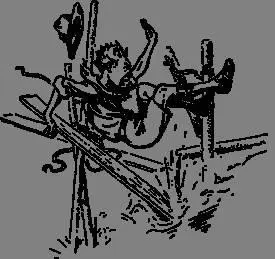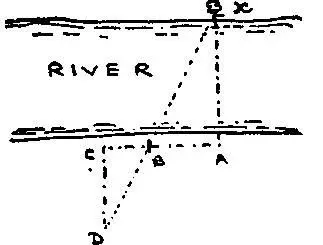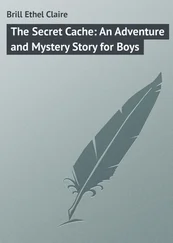Robert Robert - Scouting for Boys
Здесь есть возможность читать онлайн «Robert Robert - Scouting for Boys» весь текст электронной книги совершенно бесплатно (целиком полную версию без сокращений). В некоторых случаях можно слушать аудио, скачать через торрент в формате fb2 и присутствует краткое содержание. Жанр: Старинная литература, und. Описание произведения, (предисловие) а так же отзывы посетителей доступны на портале библиотеки ЛибКат.
- Название:Scouting for Boys
- Автор:
- Жанр:
- Год:неизвестен
- ISBN:нет данных
- Рейтинг книги:3 / 5. Голосов: 1
-
Избранное:Добавить в избранное
- Отзывы:
-
Ваша оценка:
- 60
- 1
- 2
- 3
- 4
- 5
Scouting for Boys: краткое содержание, описание и аннотация
Предлагаем к чтению аннотацию, описание, краткое содержание или предисловие (зависит от того, что написал сам автор книги «Scouting for Boys»). Если вы не нашли необходимую информацию о книге — напишите в комментариях, мы постараемся отыскать её.
Scouting for Boys — читать онлайн бесплатно полную книгу (весь текст) целиком
Ниже представлен текст книги, разбитый по страницам. Система сохранения места последней прочитанной страницы, позволяет с удобством читать онлайн бесплатно книгу «Scouting for Boys», без необходимости каждый раз заново искать на чём Вы остановились. Поставьте закладку, и сможете в любой момент перейти на страницу, на которой закончили чтение.
Интервал:
Закладка:
lashing poles together.
In India, in the Himalaya mountains, the natives make bridges out of three ropes stretched across the river and connected together every few yards by V-shaped sticks, so that one rope forms the footpath and the other two make the handrail on either side. They are a jumpy kind of bridge to walk across. But they take you over and they are easily made.
The simplest way for bridging a narrow, deep stream is to fell a tree, or two trees side by side, on the bank, so that they fall across the stream. With an adze you then flatten the top side. Put up a handrail, and there you have a very good bridge.

A simple bridge may be made from two trestles. The diagram shows you the arrangement of the parts. All the lashings are square except the one of the central crossing, w hich is diagonal.
Rafts, too, can be used to cross a stream.
Build your raft alongside the bank—in the water, if the river is shallow; on the bank if it is deep. When the raft is finished, hold on to the down-stream end, push the other out from the bank, and let the stream carry it down into position.

Some of the “bridges” of Kashmir, in India, consist of a single rope.
HINTS TO INSTRUCTORS
Start a wood-working class, or instruction in electricity, or plumbing, elementary engineering, etc., with a view to teaching the boys handicrafts that may be of real use to them in their future life. If you do not know enough about it yourself, get a friend to come and demonstrate with models or instruments for a few evenings.
Get leave to take the Scouts over a factory to study the engines, etc. Teach the boys to chop firewood. Teach them to make wooden mechanical toys (from one or two cheap ones as models). Thereby teaching them elementary mechanics and handiness with tools.
Self Measures
Every pioneer should know his exact personal measurement in the following details, of which I
give the average man’s measure:
Nail joint of forefinger, or breadth of thumb ...................................1 inch
Span of thumb and forefinger ..........................................................8 inches
Span of thumb and little finger ........................................................9 inches
Wrist to elbow (this also gives you the length of your foot)..........10 inches
Elbow to tip of forefinger (called “cubit”).....................................17 inches
Middle of kneecap to ground .........................................................18 inches
Extended arms, from finger-tip to finger-tip, is called a “fathom” and nearly equals your height.
Pulse beats about 75 times a minute. Each beat is a little quicker than a second.
Step: A step is about 2½ feet; about 120 steps equal 100 yards. Fast walking steps are shorter than slow ones.
Fast walking you walk a mile in 16 minutes, or nearly four miles an hour.
Judging Distances
Every Scout should be able to judge distance from an inch up to a mile and more.
If you remember your self measures accurately, they are a great help to you in measuring things. Also it is useful to cut notches in your staff, showing such measurements as one inch, six inches, one foot, and one yard. These you can measure off with a tape measure before you use your staff.
Judging the distance of a journey is generally done by seeing how long you have been travelling, and at what rate.
Suppose you walk at the rate of four miles an hour. If you have been walking for an hour and a half you know that you have done about six miles.
Distance can also be judged by sound. If you see a gun fired in the distance, and you count the number of seconds between the flash and the sound of the explosion reaching you, you will be able to tell how far off you are from the gun. Sound travels at the rate of 365 yards in a second—
as many yards as there are days in the year.
Test the following from your own observations:
At 50 yards, mouth and eyes of a person can be clearly seen. At 100 yards, eyes appear as dots. At 200 yards, buttons and details of uniform can still be seen. At 300 yards, face can be seen. At 400 yards, the movement of the legs can be seen. At 500 yards the colour of the uniform can be seen.
For distances over these, think out for yourself which point is half-way to the object. Estimate how far this may be from you, and then double it to obtain the distance. Another way is to estimate the farthest distance that the object can be away, and the very nearest it could be, and strike a mean between the
two.
Objects appear nearer than they really are when the light is bright and shining on the object; when looking across water or snow; when looking uphill or down. Objects appear farther off when in the shade; when across a valley; when the background is of the same colour; when the observer is lying down or kneeling; when there is a heat haze over the ground.

TOMMY THE TENDERFOOT No. 3 — TOMMY BUILDS A BRIDGE
Your knots give the strength to a bridge, as you know. But Tommy’s weak lashings just ruined the show.
Distance Across a River
The way to estimate the distance across a river is to notice an object X, such as a tree or rock, on the bank opposite to where you stand at A (see diagram). Start off at right angles to A X, and walk, say, ninety yards along your bank. On arriving at sixty yards, plant a stick or stone, B. On arriving at C, thirty yards beyond B and ninety yards from the start at A, turn at right angles and walk inland, counting your steps until you bring the stick and the distant tree in line. The number of steps you have taken from the bank, C D, will then give you the half distance across A X.

By laying out the triangles as shown i n the diagram, you can deter mi ne the width of a river with fair accuracy.
Estimating Heights
A Scout must also be able to estimate heights, from a few inches up to three thousand feet or more. He ought to be able to judge the height of a fence, the depth of a ditch, or the height of an embankment, of a house, tree, tower, hill, or mountain. It is easy to do when you have practiced
it a few times, but it is very difficult to teach it by book.
To find the height of an object, such as a tree or house, walk a distance of eleven feet or yards or any unit you like and set up a staff with
another Scout to hold it. Now walk one more unit of your chosen measurement, making twelve in all. Get your eye down to ground level at this spot and look up at the tree. The second Scout then slides his hand up or down the staff until your eye, his hand, and the top of the tree are all in
line.
Measure the distance in inches along the staff from the ground to the Scout’s hand; call these inches feet, and that is the height of the object in feet. You can use any unit of measurement you find suitable as long as you make it eleven to one, and you call inches on the staff, feet.

Интервал:
Закладка:
Похожие книги на «Scouting for Boys»
Представляем Вашему вниманию похожие книги на «Scouting for Boys» списком для выбора. Мы отобрали схожую по названию и смыслу литературу в надежде предоставить читателям больше вариантов отыскать новые, интересные, ещё непрочитанные произведения.
Обсуждение, отзывы о книге «Scouting for Boys» и просто собственные мнения читателей. Оставьте ваши комментарии, напишите, что Вы думаете о произведении, его смысле или главных героях. Укажите что конкретно понравилось, а что нет, и почему Вы так считаете.

![Роберт Баден-Пауэлл - Искусство скаута-разведчика[Scouting for boys ; Искусство Разведки для мальчиков]](/books/70572/robert-baden-pauell-iskusstvo-skauta-thumb.webp)









